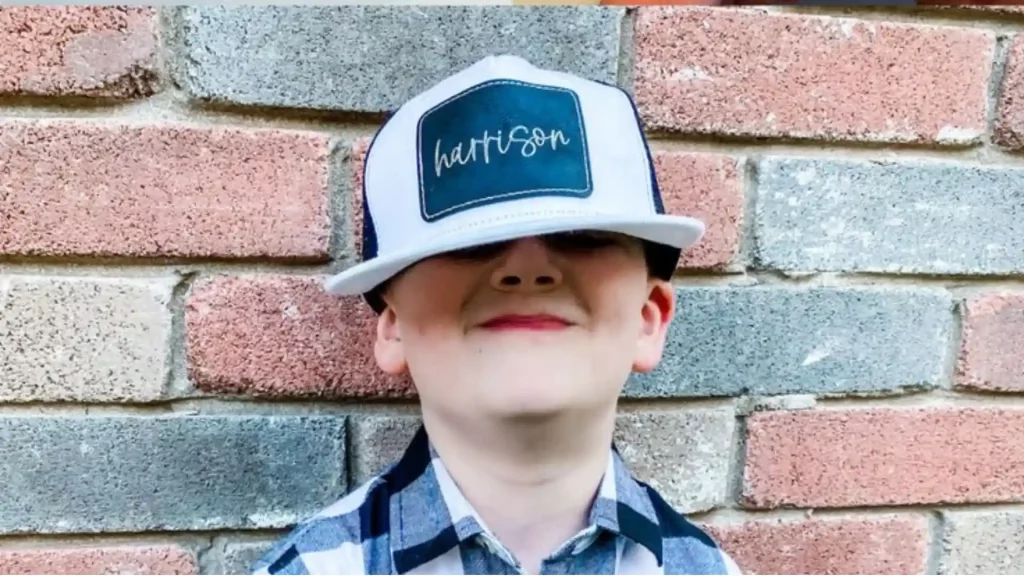
How To Sew A Patch On A Hat
Learn how to sew a patch on a hat in this ultimate step-by-step blog! Replace It: A Beginner’s Guide for Sewing a Popular Hat Patch
Are you curious to know about what are the different types of patches? If yes, then you caught the right place! So join us on this journey and explore how patches have always held a special place in the world of textiles. From the humble beginnings of mending torn clothes to the vibrant displays of badges on military uniforms, they have served a multitude of purposes. Nowadays patches are a versatile and popular way to add personality, branding, or information to clothing, bags, hats, and other textiles. They come in a wide variety of styles and materials, each with its own unique features and advantages. In this blog we’ll uncover the rich tapestry they’ve woven, exploring their evolution, their diverse types and the profound role they play across various spheres of human life.
There are several types of patches such as; embroidered patches , woven patches , leather patches , PVC patches and the list goes on. Let’s have detailed discussion on the all types of patches and their distinctive features and use.
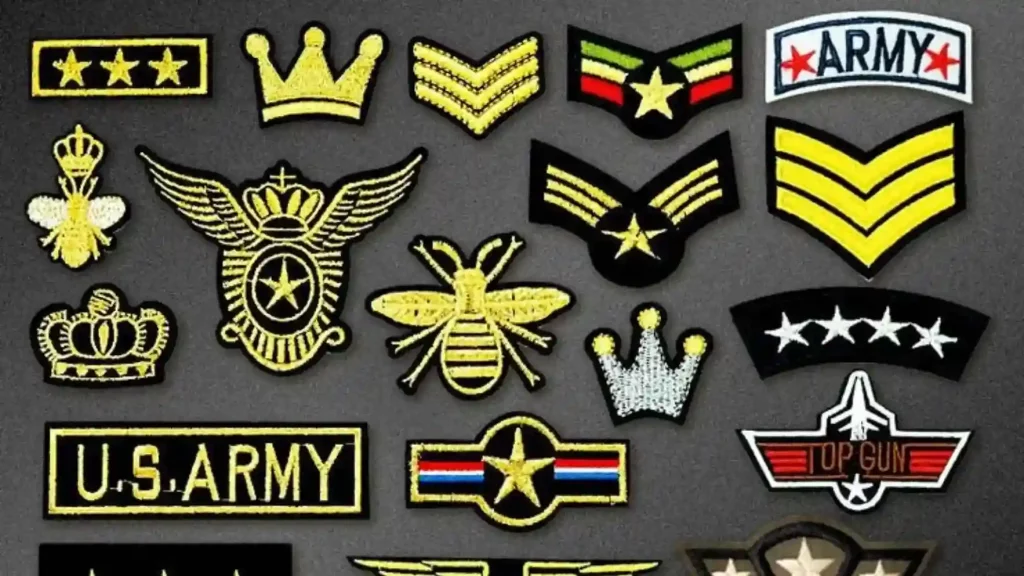
Embroidered patches are the typical expression of textile art, offering a unique combination of beauty, durability, and versatility. They are also known for their high-quality and intricate designs. Embroidered patches are created by stitching threads onto a backing material. They can be made with a wide range of colors and threads, including metallic threads for a more luxurious look. The creation of embroidered patches requires a blend of skill, precision, and creativity. Artisans employ, specialized embroidery machines or hand-stitching techniques to carefully embroider designs onto a chosen fabric, using threads of different colors, textures, and materials.
Embroidered patches have a versatile range of applications. In fashion, they serve as decorative elements on garments, adding a personalized touch to clothing, bags, or hats. Moreover, these patches are popular in branding and marketing, where companies use them on uniforms, merchandise, or promotional items to establish brand identity. In the realm of clubs, organizations, and teams, embroidered patches signify membership, achievements, or affiliation. Furthermore, within the military and law enforcement, these patches hold immense significance, representing units, ranks, or specific missions.
The durability and aesthetic appeal of embroidered patches make them a favored choice across industries. Their quality of withstanding in wear and tear and simultaneously offering intricate designs make them a classic and impactful accessory, merging craftsmanship with functionality.
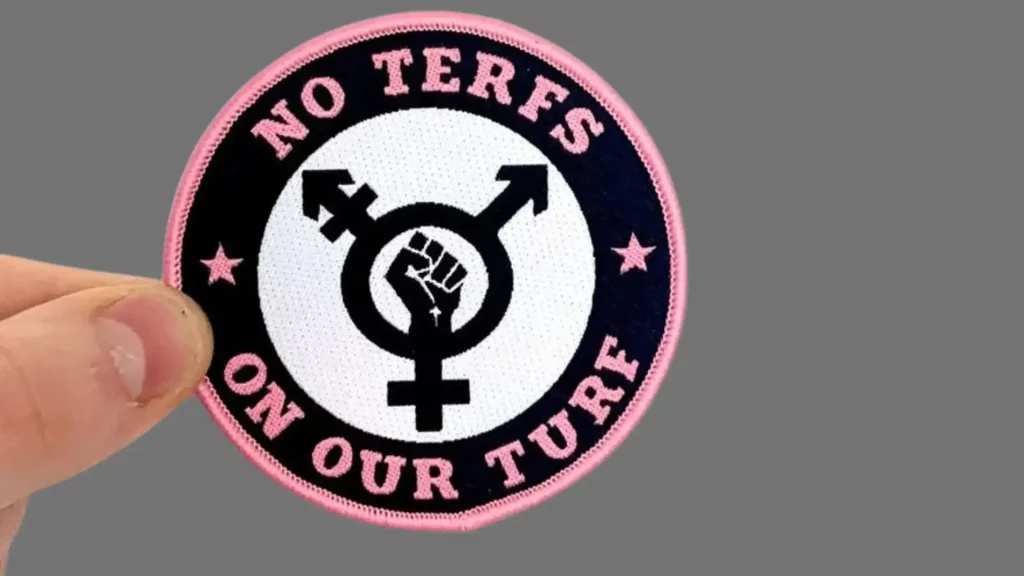
Woven patches represent a blend of enduring durability and intricate design, making them a sought-after choice across various applications due to their robustness and detailed visuals. Woven patches are crafted with a woven, cloth-like base, ensuring exceptional resilience against wear and tear. The weaving process allows for precise and detailed designs, presenting intricate patterns, texts, and graphics. These patches find application in various industries like, corporate branding, sports teams, and organizations seeking a polished and durable emblem. Their ability to withstand harsh conditions without compromising on visual intricacy makes woven patches a versatile and reliable choice.
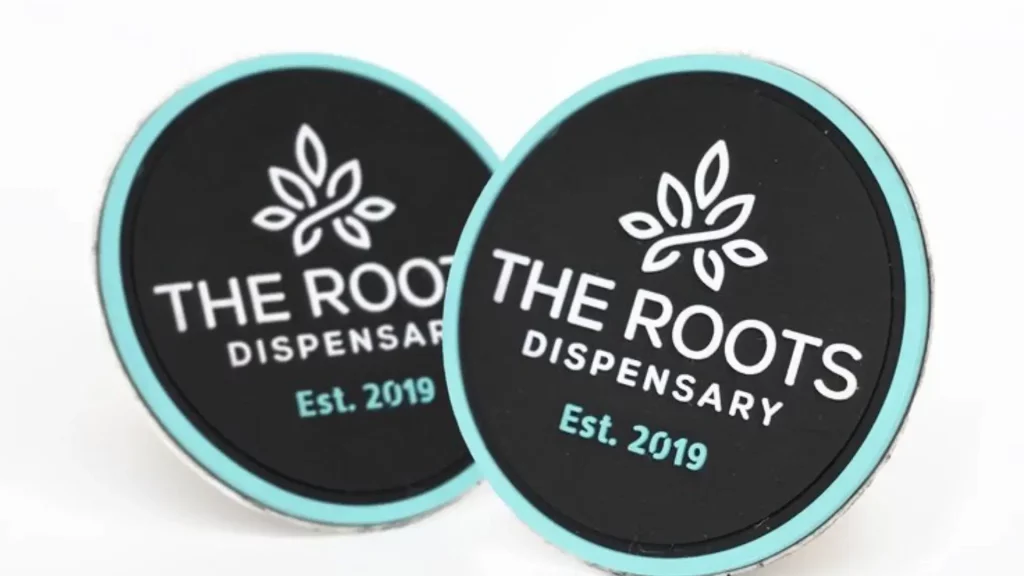
PVC patches are known for their unique blend of waterproof durability and limitless creative potential, making them a versatile choice for a wide range of applications. PVC patches are crafted from polyvinyl chloride, a durable and waterproof material. This characteristic makes them exceptionally resilient against moisture, ensuring they remain unaffected by rain, water splashes, or harsh weather conditions. Their waterproof nature makes PVC patches ideal for outdoor gear, bags, or items exposed to varying environmental elements, ensuring longevity and visual integrity even in challenging conditions. The production process of PVC patches allows for intricate and detailed designs.
These patches can be molded into various shapes, sizes, and textures, providing endless creative opportunities. The use of vibrant colors, 3D effects, and intricate detailing is easily achievable with PVC patches, making them a preferred choice for displaying complex logos, unique textures, or designs requiring precision and depth. PVC patches are used across diverse industries such as outdoor gear, military gear, or products requiring resistance to moisture and rugged conditions.

Sublimated patches are a testament to high-detail designs and a wide range of colors, using a unique printing process that brings intricate designs to life with unparalleled vibrancy. Sublimated patches utilize a printing technique that allows for incredibly detailed designs. Using heat and pressure, dyes are transformed into gas, penetrating the fabric’s fibers. This process results in designs with exceptional clarity, intricate details, and sharp edges, enabling the reproduction of complex imagery, fine lines, and small text that traditional methods might struggle to replicate.
The dye-infusion technique ensures heat colors penetrate the fabric thoroughly which creates the colors that are rich, long-lasting, and fade-resistant. This capability to produce an extensive spectrum of colors enables the creation of eye-catching, vivid patches that stand out and maintain their brilliance over time. Sublimated patches are popular in industries requiring high-resolution, detailed designs, such as sports teams, where logos or intricate graphics demand precision and visual impact. Their characteristic to capture intricate details and vibrant colors makes them a preferred choice for those who are seeking for dynamic and visually striking patches.
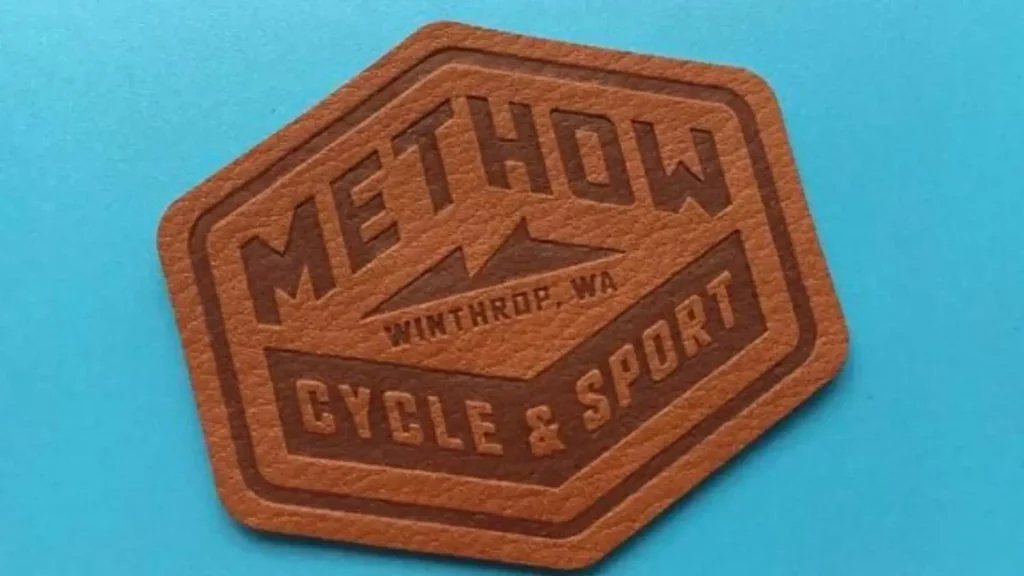
Leather patches are made from genuine or PU faux leather. They are known for their natural beauty and sophisticated look. Leather patches are a good choice to add a luxury to clothing and accessories. Moreover, leather patches can be customized, providing identity and distinctiveness to every brand. In order to create logos these patches are embossed, laser engraved and UV printed.
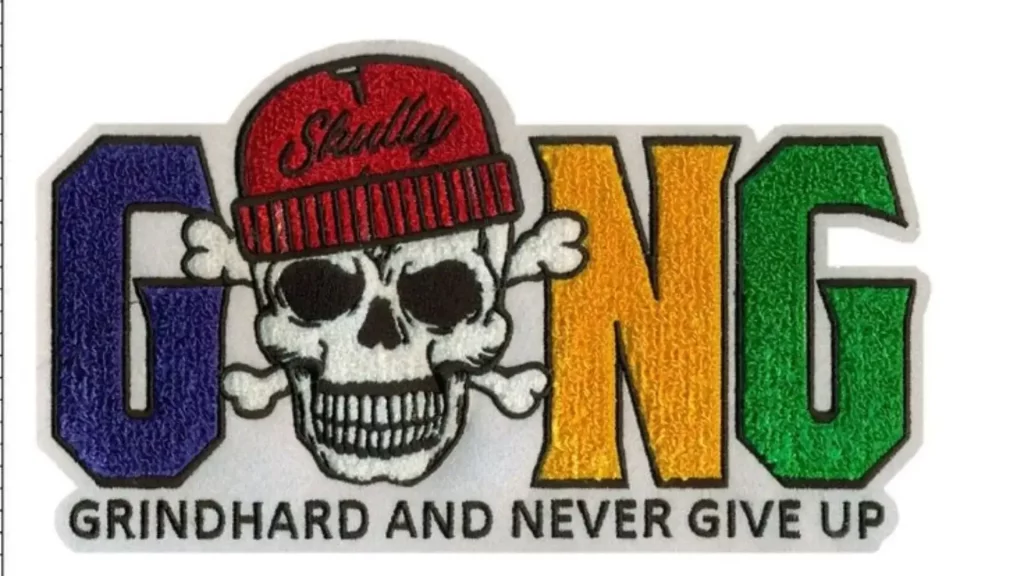
Chenille patches have a unique and textured appearance that makes them distinctive in the realm of patches and embroidery. These patches are made using chenille yarn, which gives them a fuzzy, velvety feel and a prominent raised surface. Typically, chenille patches are created by stitching layers of chenille yarn onto a felt or twill base, forming designs or letters with a luxurious and plush look.
One of the most popular uses of chenille patches is in varsity letters and emblems on letterman jackets, especially in academic and sports settings. These patches display a school’s initials, team logos, or achievements, symbolizing pride, accomplishment, and belonging. The versatility of chenille patches extends beyond aesthetics. They’re also used as branding elements for businesses, as decorative additions to merchandise, or as commemorative items for special events. Their distinct texture and raised appearance make them memorable and highly customizable, catering to diverse preferences and purposes.
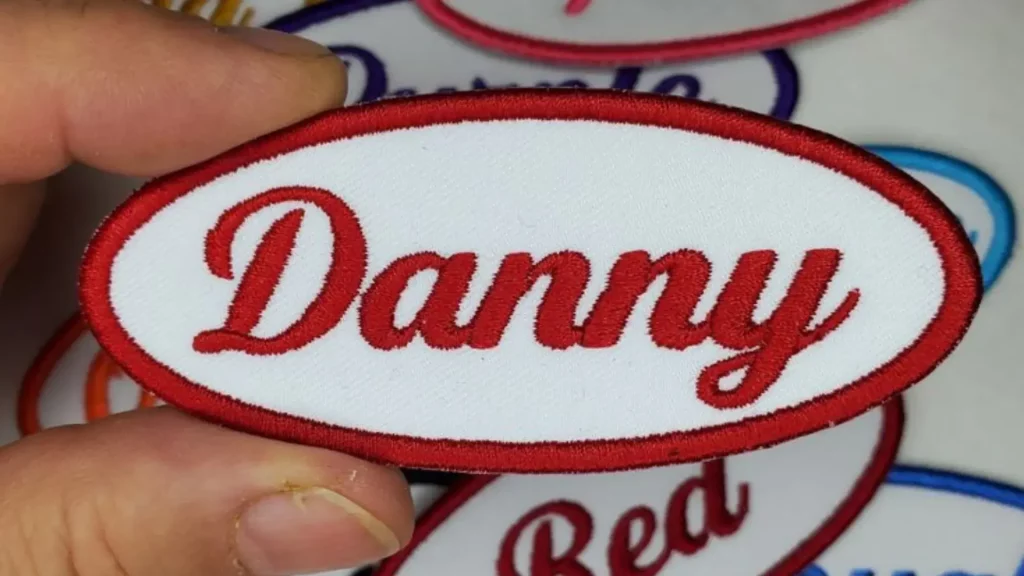
As its name demonstrates, Name patches, are printed, sewn, iron on a name or brand logo on the patch. The name patches only have logo name, with almost no additional adornment or decoration. They can be made in any shape or size. Moreover, brand name or logo can be made on the woven, embroidered and chenille patches because all types of patches can be a name patch. They are used for all types of coats, hats, shoes, bags, jacket and so on.
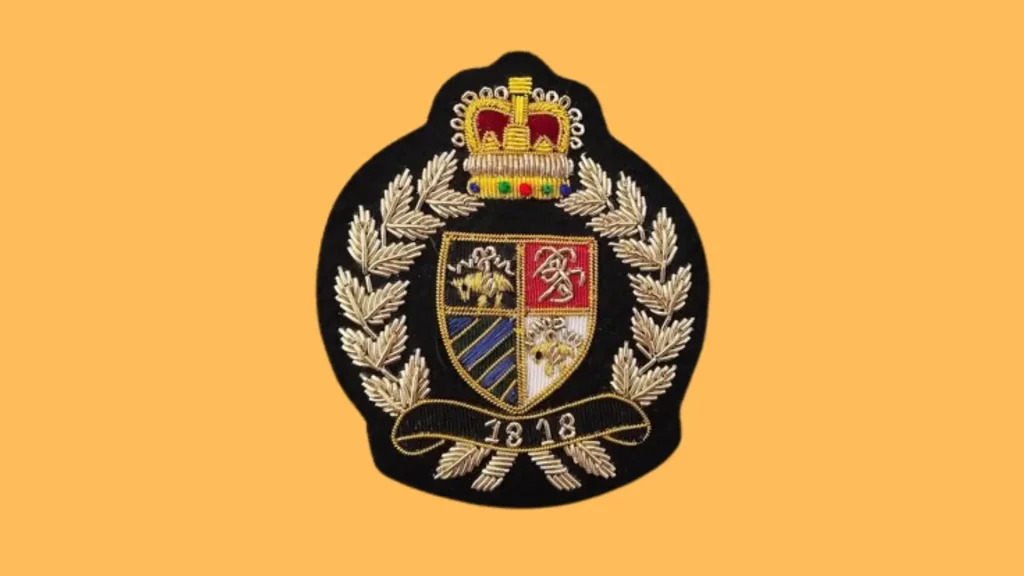
uniforms, cuffs, epaulets, sword belts, military boots, ski boots, etc.Come to customize a leather patch with a personalized logo will surely promote brand images. So, they are perfect for various of clothing such as jackets, jeans, shirts, beanies, hats, trousers, bags, books, sweaters, beanies, gifts, etc……..
Bullion patches are intricately embroidered patches typically made using bullion thread, which is a type of coiled wire thread. These patches are well recognized for their three-dimensional and textured appearance. They are used to add a touch of sophistication and elegance to various garments, military uniforms, or accessories.
Its creation procedure requires skilled craftsmanship. Artisans use specialized techniques to manipulate the bullion wire into elaborate designs. The significant features of bullion patches are their intricate patterns, emblems, logos, or insignias, making them popular for military decorations, club logos, or even fashion embellishments. Bullion patches are expensive for their detailed and luxurious look. The shimmer and shine of the bullion thread intensifies its distinct visual appeal, making it eye-catching and attractive.
These patches have a rich history and are often associated with military regalia or high-end fashion. They have versatility and can be sewn or attached using various methods onto clothing, bags, hats, or any fabric surface, adding a touch of sophistication and personality to the item. Due to their craftsmanship and intricate detailing, bullion patches are often considered antique and souvenir. Whether used for their symbolic significance, decorative purposes, or as part of a uniform, bullion patches continue to hold a special place in the realm of embroidered patches.

Printed Patches are screen-printed fabric patches that you can print your logo, pics with a colorful design. It is then laser cut to the desired shape and size. And the entire surface looks smooth and delicate. Then, the details can be printed.
They are light and durable. Simple process and high-cost performance. So, you can customize printed patches for your own brand! Meanwhile, sew or Velcro them on fabric surfaces. Such as clothing, shoes, backpacks, jeans, jackets, luggage, sports gear.
Printed patches are modified of traditional embroidered patches, presenting a different style and aesthetic. Instead of using thread to create the design, printed patches involve a printing process where the desired design is directly printed onto a fabric base. These patches offer versatility and a wide range of customization options, making them popular for various purposes.
In the creation of printed patches, digital printing techniques are used, offering intricate details, vibrant colors, and complex designs. This method enables the reproduction of photographs, detailed artwork, gradients, and various color combinations that might be challenging to achieve with traditional embroidery.
One of the key advantages of printed patches is their ability to produce precise details and designs with a high level of accuracy. This makes them an ideal choice for patches that require intricate patterns, fine lines, or specific branding elements. Printed patches are versatile and can be made from different types of materials, such as twill, canvas, or polyester. They offer flexibility in terms of size, shape, and texture.
Moreover, these patches are often thinner and more flexible than embroidered patches, offering easy attachment to various surfaces. They are used in promotional merchandise, brand logos, team emblems, event souvenirs, or even personal expressions of style. Their ability to showcase detailed designs and vibrant colors makes them popular in industries like fashion, sports, marketing, and corporate branding. Although printed patches have different production process as compare to traditional embroidered patches still they offer a eye-catching and cost-effective alternative.
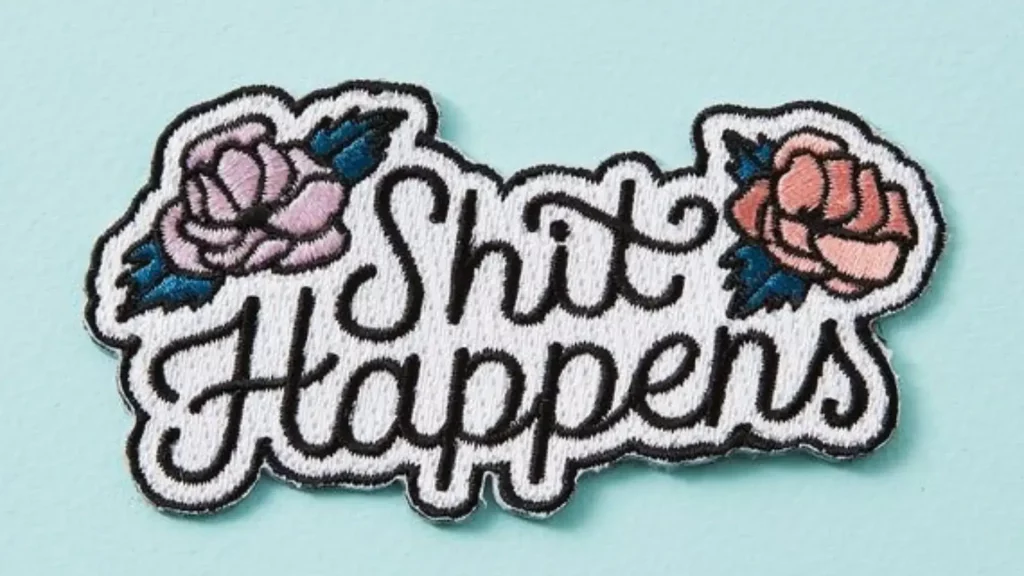
Iron-on patches are convenient and easy-to-apply patches that feature an adhesive backing, allowing them to be attached to fabric using heat from an iron. These patches are popular for their simplicity and versatility, offering a practical solution for customizing clothing, repairing tears, or adding decorative elements to various items.The patches come with a heat-activated adhesive on the backside, which is typically covered with a protective paper or film. To attach the patch, the protective covering is removed, and the patch is placed onto the desired fabric surface with the adhesive side facing down. Then, a hot iron is used to apply pressure and heat, activating the adhesive and securely bonding the patch to the fabric.
These patches are available in various designs, shapes, sizes, and materials. They are commonly used for adding flair to denim jackets, jeans, backpacks, and even uniforms. Their ease of use and temporary nature make them ideal for individuals who want to change or update the look of their garments without permanent alterations.
Although the application method of iron-on patches is relatively simple but the durability of the bond may vary depending on the fabric type, the quality of the patch, and the application process. Proper care, such as avoiding high heat in laundering and ensuring a flat, clean surface during application, can help maintain the longevity of the iron-on patches.
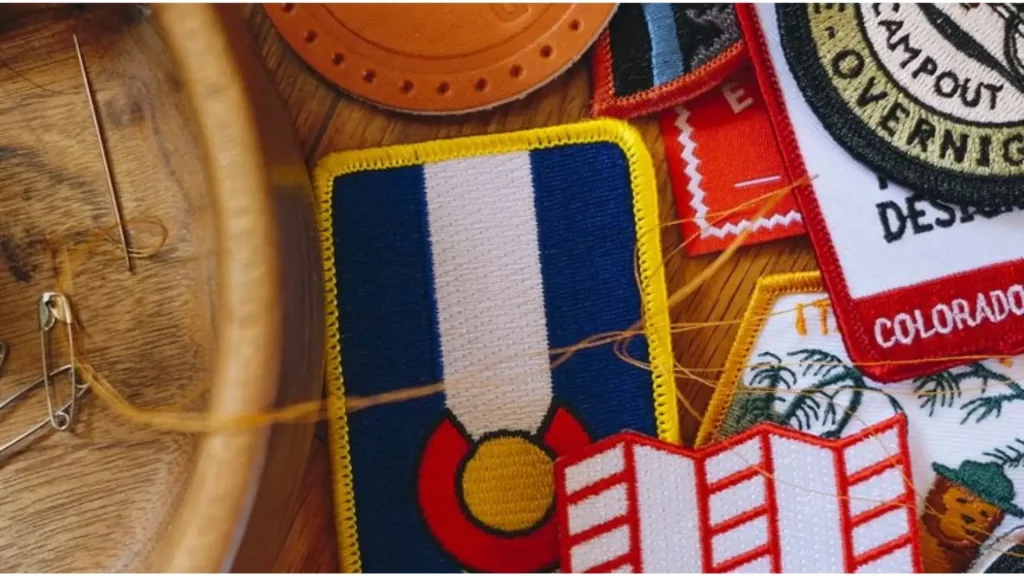
Sew-on patches are designed to be attached to fabric surfaces by sewing. They are crafted with embroidered threads on a fabric base and don’t have adhesive backing rather they require manual stitching for application. They have been popular for a long time due to their durability, flexibility, and traditional aesthetic.
The process of attaching sew-on patches involves using a needle and thread to sew the patch securely onto the desired fabric. Sew-on patches come in a vast range of designs, shapes, and sizes, offering versatility for various applications. They are used for intricate logos, emblems, team insignias, or personalized designs, making them a popular choice for uniforms, jackets, bags, hats, or any fabric surface that allows for sewing.
These patches have great durability and their sturdy construction makes them suitable for items that undergo frequent use or laundering. Additionally, sew-on patches offer more permanent attachment than iron-on patches, as they are less susceptible to peeling or coming off over time.
One of the most recognized advantages of sew-on patches is their flexibility and adaptability to different fabric types and textures. They can be sewn onto various materials such as cotton, denim, leather, or synthetic fabrics, offering the facility of customization for a diverse range of garments and accessories
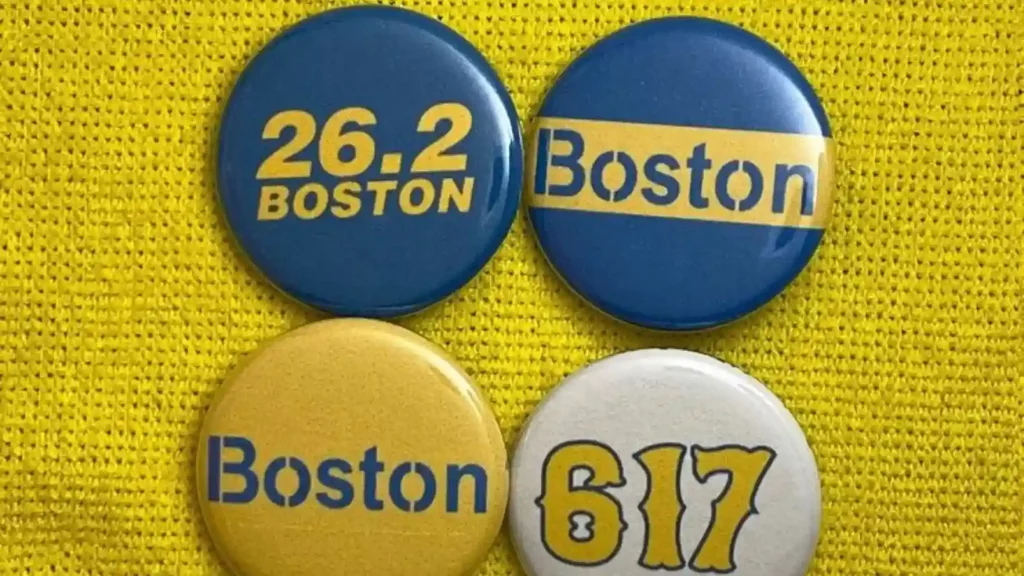
Magnet patches are patches with magnets for attachment. These patches have a magnetic backing, allowing them to adhere to metal surfaces without sewing, adhesive, or any additional tools.
These patches are created with a fabric or embroidered surface presenting a design or emblem, similar to traditional patches. However, instead of relying on sewing or adhesive, they incorporate a magnet into the backing. The magnet provides a convenient way to attach the patch to metal surfaces, such as clothing with magnetic-friendly material or items like refrigerators, magnetic boards, or other metallic surfaces. The magnet used in these patches is usually concealed within the patch layers, ensuring that the design remains intact while the magnetic backing securely adheres to metal surfaces. This feature makes them versatile and easily transferable between different items or clothing without the need for permanent attachment methods like sewing or adhesive.

Adhesive-backed patches are patches designed with a layer of adhesive on the backside, allowing them to stick onto fabric or other surfaces without sewing or additional glues. These patches are created from various materials such as fabric, embroidered threads, PVC, or other synthetic materials. The key feature of these patches is the adhesive backing, which is typically covered by a protective film or paper and ready to be attached. When the protective covering is removed, the adhesive is exposed, allowing the patch to be stuck onto a clean, dry surface by applying pressure.
The adhesive used in these patches is formulated to create a strong bond with the fabric or surface it’s applied to. Once properly attached, the patch should stay in place under normal conditions. However, the strength of the bond can vary based on different factors like the quality of the adhesive, the surface texture, and exposure to elements like heat or moisture.
Adhesive-backed patches offer a convenient and easy-to-use option for customizing clothing, bags, hats, or various fabric items without the need for sewing skills or specialized tools.. However, they might not be as durable as sew-on patches and could be more susceptible to coming off over time, especially after multiple washes or exposure to harsh conditions.
Choosing between iron-on and sew-on attachment methods for patches involves considering factors like convenience, permanence, and the fabric’s nature.
Iron-on patches come with an adhesive backing that, when heated, bonds the patch to the fabric. They offer ease of application, requiring only an iron and a few seconds of heat to secure the patch in place. This method is convenient and quick, making it popular for those seeking a hassle-free attachment process.
While convenient, iron-on patches may not be as permanent as sew-on patches. Over time and through frequent washing or exposure to heat, the adhesive may weaken, causing the patch to loosen or detach. Therefore, they might not be the best choice for items that undergo heavy wear and tear.
Sew-on patches are attached by stitching around the edges, providing a more secure and durable attachment. This method ensures that the patch remains firmly affixed, even through multiple washes or rough use, making it suitable for items subjected to frequent movement or strain.
Sew-on patches can be applied to a broader range of fabrics as compare to iron-on patches. They work well on fabrics that might not tolerate heat, such as nylon or leather, offering versatility in application.
Patches in fashion have transcended their traditional roles, evolving into powerful statements that reflect individuality, creativity, and even social commentary.
In recent years, patches have made a significant comeback in the fashion world, with designers and fashion enthusiasts embracing their versatility. Whether adorning denim jackets, jeans, bags, or hats, patches offer a means of personalization. They offer individuals to own their style, mixing and matching patches that resonate with their interests, beliefs, or memories, thereby creating unique and personalized fashion statements.
The resurgence of patches also reflects a nod to nostalgia, drawing inspiration from retro aesthetics. Vintage-inspired patches, reminiscent of past decades or cultural movements, add a touch of nostalgia to modern fashion. They have a great attraction for the seekers of a blend of contemporary and classic styles.
Along with fashion, patches also serve as a canvas for social and political expression. They can convey powerful messages, ideologies, or support for causes, turning garments into platforms for activism or personal beliefs. Patches with slogans, symbols, or illustrations often communicate a wearer’s attitude on various issues.
To conclude, in this ultimate guide, I’ve covered all the aspects of different types of patches. From understanding their historic significance to the diverse type of patches, we also have analyzed their distinctive features and characteristics. The selection of patches depends on different factors like, desired look, budget, application and personal preferences. If the patch will be subject to wear and tear then durable material like PVC or leather will be best option. Or if patches are supposed to expose to the elements choose a waterproof material like PVC or nylon. For colorfastness, embroidered and woven are a good option. Hopefully, this comprehensive guide will help you better understand different types of patches.
Sew-on patches can withstand washing and dry cleaning while Iron-on and adhesive-backed patches might require more delicate care to maintain their adhesion.
Patches, especially iron-on ones, require heat, so caution should be taken to avoid burns. Additionally, ensure proper ventilation while using adhesives.
Unused patches should be kept in a cool, dry place, ideally in a sealed bag or container to prevent dust accumulation or exposure to moisture.
the durability of patches can vary based on the types, quality and care. Sew-on patches are more permanent while iron-on and adhesive-backed patches may need occasional reinforcement.
No spam, notifications only about Latest posts, updates.

Learn how to sew a patch on a hat in this ultimate step-by-step blog! Replace It: A Beginner’s Guide for Sewing a Popular Hat Patch
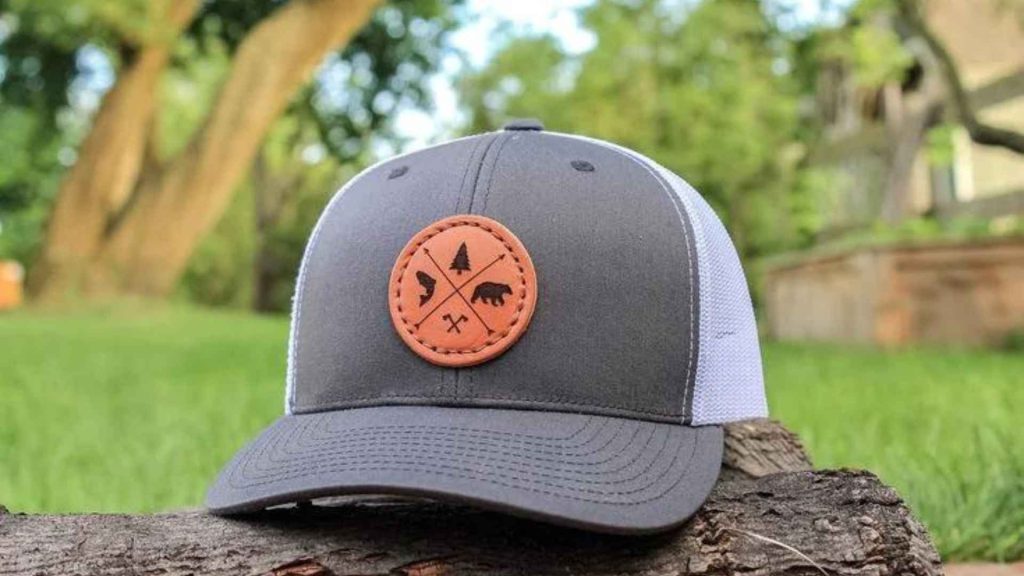
How To Attach Leather Patch To Hat: A Step-by-Step Guide for Excelling at Joining Leather Patches likes a Star to Your Number One Hats! “Discover
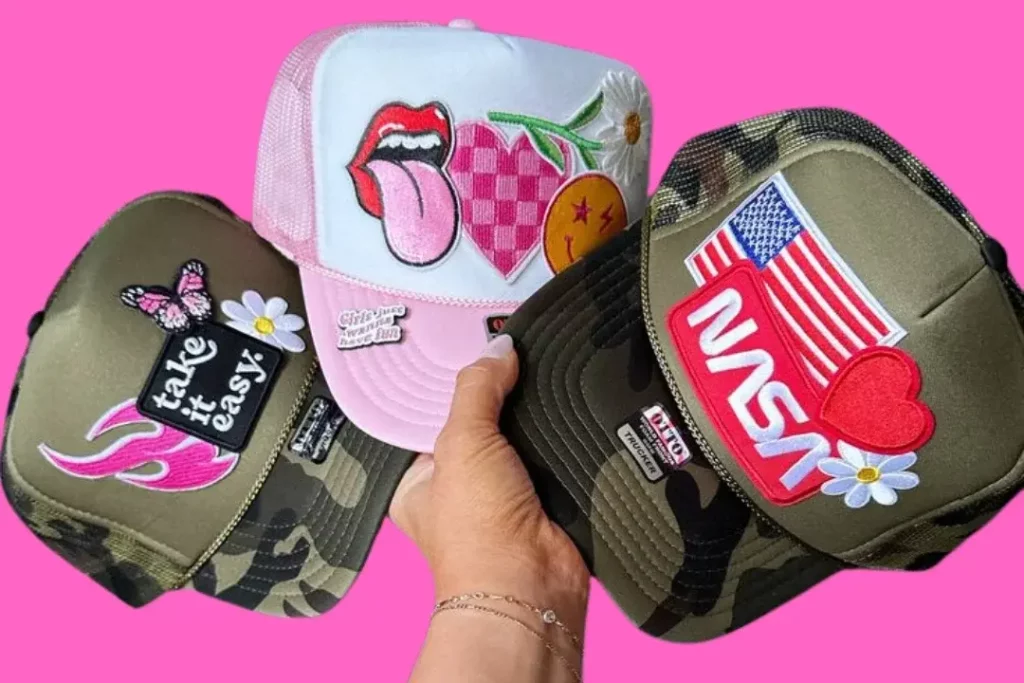
How to Put a Patch on a Hat without Sewing: A Step-by-Step Guide for the Craft of Non-Sewing Reforming your Hat Customization Hats act as
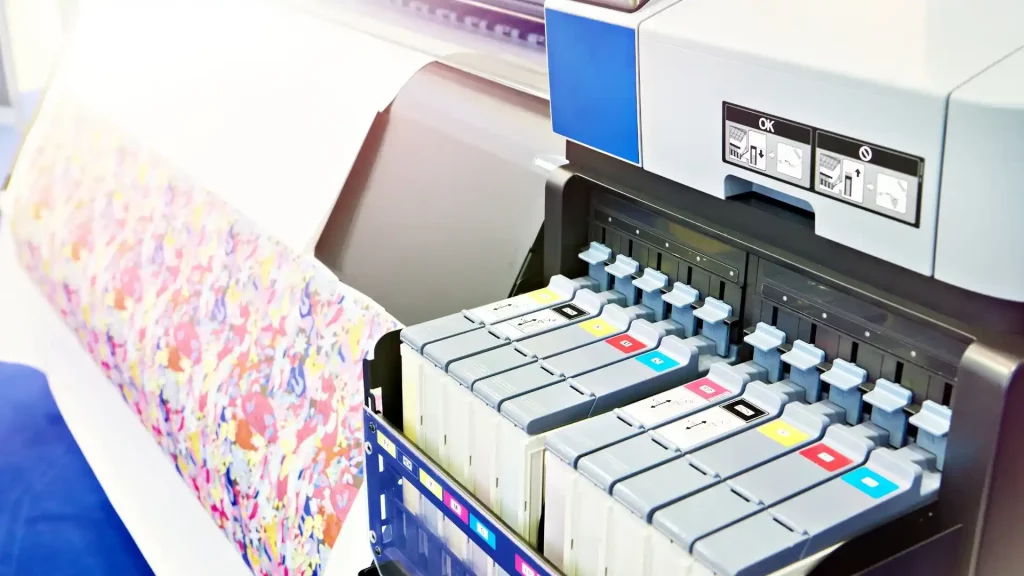
How to Make Sublimation Hat Patches, Step Up Your Hat Game With Do It Yourself DIY Project At Home “Discover best methods on how to
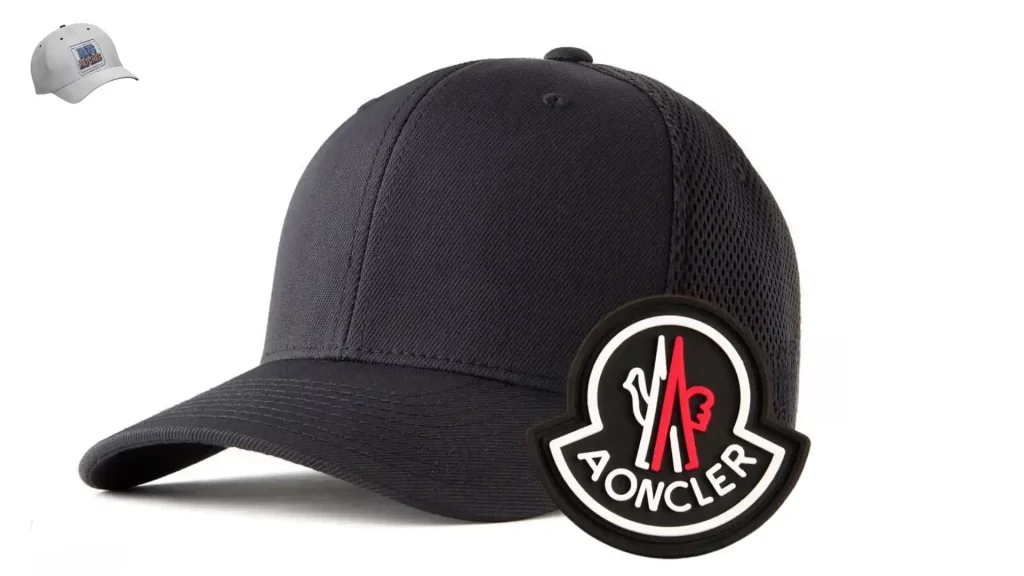
How to Attach PVC Patch to Hat: A Step-by-Step Guide for Excelling at Adding PVC Patches to Your Hats Like A Pro “Discover a step-by-step
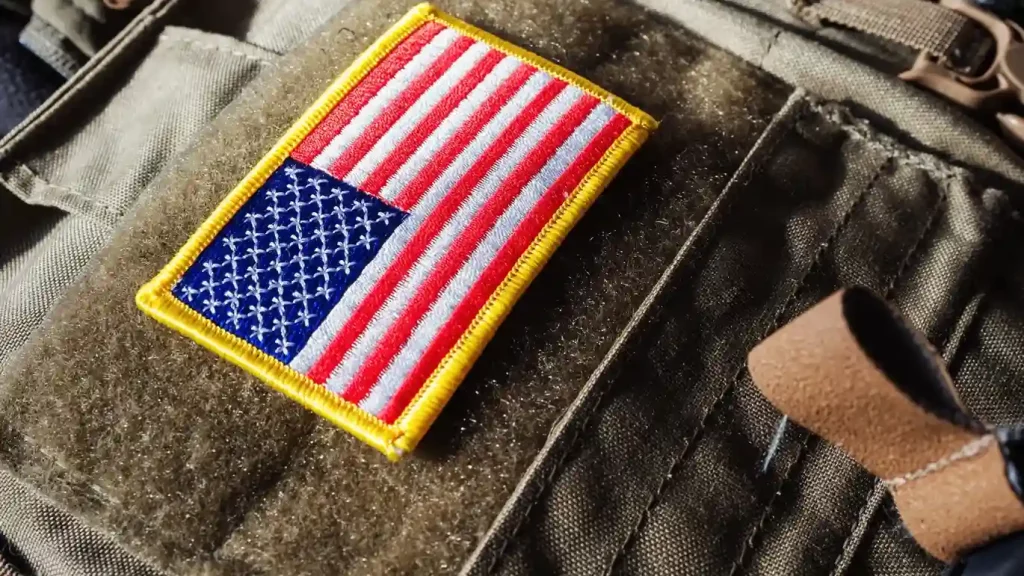
Discover The Art Of How To Make Velcro Patches And Craft Your Own Trendy Velcro Patches Are you curious to learn how to make velcro
Don’t miss our future updates! Get Subscribed Today!
©2024 hatspatches.com - All Rights Reserved
WhatsApp us